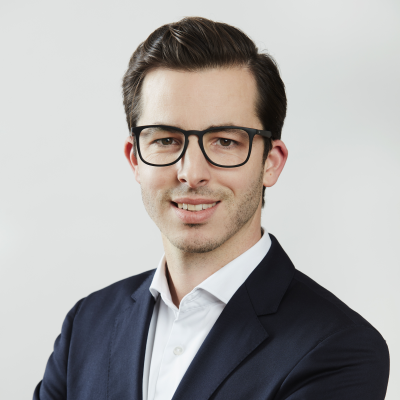The space industry is at the beginning of a new era in digital engineering and information management. The ESA (European Space Agency), for example, is relying entirely on Model Based Systems Engineering (MBSE). Against this backdrop, Beyond Gravity Austria recently began modelling and is being supported by LieberLieber.
Vienna – Philip Olbrich works in Vienna at Beyond Gravity Austria in the ‘Satellites’ division as an embedded software engineer for the ‘Electronic Solutions’ business unit: ‘As we regularly work on projects for the European Space Agency ESA, we have now sought out an experienced MBSE partner in LieberLieber in order to find the right entry point. In a ‘proof of concept’, we are taking a closer look at a tool chain with Enterprise Architect, Sysmod Toolbox, Git and LemonTree and were prepared for this by Philipp Kalenda in two workshops.’
Dr Konrad Wieland, CEO of LieberLieber: ‘The aerospace sector in particular places the highest demands on systems, which can be met in a targeted and audit-proof manner with MBSE. We therefore welcome ESA’s clear focus on MBSE in order to keep the complexity of modern space systems under control. The collaboration with Beyond Gravity Austria gives us the opportunity to contribute our decades of experience with methods and tools and to show that MBSE is the right approach to mastering the requirements that arise here.’

Dr. Konrad Wieland
CEO of LieberLieber
ESA relies on Model Based Systems Engineering (MBSE)
The space industry is currently looking for new methods to manage information and projects in which different technical disciplines work together. MBSE provides a powerful digital framework for visualising complex systems. By placing digital models at the centre of the development process, significant time and cost savings can be achieved. This is helped by the shared understanding of the system design, which makes it possible to reduce inefficiencies and errors due to inconsistent information in different documentation. ESA writes: ‘Revolutionising the traditional, document-driven approach to system development is key to ESA’s technology strategy and Agenda 2025. ESA aims to reduce spacecraft development time by 30% and improve cost efficiency by an order of magnitude with each generation. Achieving these ambitious goals requires not only technological improvements, but also a change in the spacecraft development process and the mindset of engineers. This can be achieved with MBSE.’
Entry into MBSE as part of a specific ESA project
The collaboration between Beyond Gravity Austria and LieberLieber is taking place as part of a specific ESA project (‘Digital beamforming for GNSS-R radio occultation payload’), in which software for satellites is being developed. ‘As our scope in the project is not too complex, it is very suitable for practising the new methods and tools. The regulations for software in satellites are naturally very strict, especially with regard to validation and verification. This gives us an insight into the new possibilities that MBSE opens up for us in a specific project,’ explains Olbrich.
Philipp Kalenda, Head of Consulting at LieberLieber: ‘For me, it is always interesting to learn about the different challenges involved in developing complex systems in various industries. Although the systems are used in different domains (medical technology, aerospace, etc.), they have a few things in common: over time, there are more and more subsystems, components and, above all, different disciplines (software, hardware, mechanics, etc.) that are closely linked. In order to better understand this interplay between the different disciplines, an abstract representation of the overall physical system using a system model is suitable. I am delighted to support Beyond Gravity Austria in the introduction of a model-based approach and look forward to working with them in the future.’

Philipp Kalenda
Head of Consulting at LieberLieber
The tool chain for the proof of concept at Beyond Gravity Austria

Infobox
„Agenda 2025“: MBSE for the European Space Agency (ESA)
‘ESA projects are characterised by a high technical effort performed by geographically distributed teams from ESA and industry. Digital continuity throughout the lifecycle of projects will enable a significant reduction in cost and effort and will shorten timelines. ESA will therefore digitise its entire project management and enable the development of digital twins, both for engineering through the use of Model Based Systems Engineering and for procurement and finance, to achieve full continuity with industry.’ – ESA Director General Josef Aschbacher (Agenda 2025)
The MB4SE Initiative
‘Model Based for Systems Engineering’ is an initiative to bring together space systems engineering in order to promote model-based system development in European space projects. In order to better coordinate industrial and scientific projects in this field, they are to be bundled in the ‘Model Based for System Engineering (MB4SE) for Space’ platform. Central aspects of this are a semantic reference base in the form of a space system ontology and a common modelling hub concept. The platform will be used for technical discussions and as a contact point for all stakeholders involved. To this end, an advisory group will be set up to manage the work plan for the technical discussions. In addition, it will also ensure the management of the conceptual data model.
ESA uses Enterprise Architect for reverse engineering
In its Agenda 2025, the European Space Agency (ESA) is focussing entirely on Model Based Systems Engineering (MBSE) and wants to move away from its document-based development strategy. It is using Enterprise Architect for a reverse engineering project. Although the European Space Agency (ESA) still developed the OPS-SAT satellite in the traditional document-based way, it then commissioned a reverse engineering process from the German company GPP Communication, which was modelled using Enterprise Architect. This model will now serve as the basis for the next mission.
Peter Gersing from GPP described this project in a presentation. The latest MBSE methods and the SysML modelling language were used in the project. The language was chosen as it is the most commonly used for system design within ESA and in industry.
Selection of Enterprise Architect
According to the Executive Summary Report of the reverse engineering project, two MBSE tools were shortlisted: Enterprise Architect (Sparx Systems) and 3DS Catia-NoMagic (Dassault Systems). ‘Both tools scored well for the criteria of acceptance by ESA, market share, feature set, SysML support, collaboration support and configuration control. One major difference is the licence costs, which ultimately led to the final decision in favour of Enterprise Architect.’ Enterprise Architect ran on a GPP server and all team members had access to the model. ESA’s review partners were given access via a web browser to view and comment on the model.
Building the model
The first step in the project was to create a physical viewpoint of the OPS-SAT model based on the information from the specifications. However, this required many interviews with the experts in order to understand the details and fill in the gaps.
The focus of the project was on the spacecraft, but the entire mission was included in order to capture the context. The vehicle was broken down into subsystems in order to enrich the model with more details. The system was described using structure diagrams (block definition and internal block diagrams for the architecture) and behaviour diagrams (state machine, sequence diagram, activity diagram).
OPS-SAT project very successful
Overall, the reverse engineering project for OPS-SAT was rated as ‘very successful’. According to the ‘Executive Summary Report’, the decision for the lean setup of the modelling framework based on COTS components for Enterprise Architect and a simple SysML standard profile was sufficiently process-supporting at all times during modelling, and no missing features were identified. Thus, this setup appears to be useful for new projects and MBSE beginners without too much effort for customisation or tool development.
The main advantages of MBSE were seen in:
- Ensuring data consistency
- Improved communication and quality of design by supporting extended analysis (e.g. requirements, functional) and precise specification of system architecture and behaviour
- Documentation effort can be significantly reduced if the model is used as the sole source for creating other artefacts and reports
Develop MBSE awareness on a broad basis
Ultimately, developing MBSE awareness and an MBSE experience within an organisation is the key to starting a change process from a traditional, document-based approach to model-based systems engineering. However, it is important not only to convince MBSE enthusiasts of the benefits, but also to involve regular users.
Overall, the team’s conclusion was:
- Reverse engineering is an excellent approach to introduce MBSE, and to gain a holistic understanding from the developed system
- Diagrams of the model enable quick reviews with the experts for maximum knowledge transfer
- Re-use of the model provides a head start for the next mission and allows to optimise instead of starting from scratch
About Beyond Gravity
Beyond Gravity Austria (formerly RUAG Space Austria), based in Vienna-Meidling, is Austria’s largest space technology company with a turnover of around 50 million euros (2023) and around 240 employees. The high-tech company equips satellites and launch vehicles worldwide with electronics, mechanics and thermal insulation and has an export quota of around 100 per cent. The company is the market leader in Europe for navigation receivers, thermal insulation and engine control mechanisms for satellites and in the USA for special transport systems for large satellites. As a spin-off from its space activities, the company also produces thermal insulation for applications on earth, for example for magnetic resonance imaging in medical technology. The company is part of Beyond Gravity, headquartered in Zurich, Switzerland, with a total of around 1800 employees at 14 locations in seven countries (Switzerland, Sweden, Austria, Germany, Portugal, USA and Finland).
More information www.beyondgravity.com


